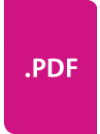Every child in New Zealand deserves to thrive physically, academically, socially, and culturally. However, too many Māori children are leaving school without the education they deserve.
The number of Māori students is growing. By 2030, the proportion of children who are Māori is likely to increase to about 30%, and this growth is forecast to continue.
Academic results for Māori students are improving. However, without effective action, increasing numbers of Māori children will finish school worse off than their peers. This could adversely affect their quality of life and prevent them from fully contributing to a more equitable and prosperous New Zealand.
In August 2012, we outlined our intentions to look into this significant challenge for New Zealand. We set out a fi ve-year programme of work, using a set of questions as a framework to guide our selection of audit activity under one over-arching and important question:
How well does the education system currently support Māori students to achieve their full potential and contribute to the future prosperity of New Zealand?
Since then, we have published fi ve reports. Our fi nal summary report brings together what we have learned and what the education system has done to improve Māori student achievement in recent years, as well as what lessons and challenges remain.
Key Results
Overall, progress on Māori education is still too slow. However, there is huge potential for Māori to enjoy more educational success as Māori. In our view, significant improvement in Māori education is a realistic objective.
Māori educational success is in the interests of all New Zealanders.
Through our programme of work on Māori education, we found that:
• There is more to do to enable greater and faster gains in Māori student achievement. There have been modest gains since the slow and unsteady introduction of the Government’s main education strategy for improving Māri achievement, Ka Hikitia –Managing for Success (Ka Hikitia) in 2008. There have also been positive signs of improvement in individual schools, either self-initiated or arising from the abundance of initiatives available to schools under Vote Education, including many initiatives targeted at or emphasising Māori students. The education sector, led by the Ministry of Education, needs to continue to work together to consolidate and multiply these gains throughout the education system.
• Schools prove it can be done – great opportunity for all schools to improve Māori educational success. Our analysis of National Standards and National Certificate of Educational Achievement (NCEA) data for Māori students shows that some schools are able to achieve much better results in similar circumstances. This presents a significant opportunity for schools to share and learn from “similar” but better-performing schools to achieve better overall results for Māri students. We encourage collaboration and co-operation throughout the education system to spread good practices and lift the performance of schools that are lagging behind.
• Every school needs to implement Ka Hikitia. Ka Hikitia has helped schools to focus on improving Māori student outcomes. However, implementation could be more effective with fewer and better-connected initiatives. Right now, there are too many Māori education initiatives that are not connected or evaluated for cost-eff ectiveness. A more coherent set of initiatives would probably result in better outcomes. We urge the education sector to properly implement Ka Hikitia in all schools.
• Schools need to engage with whānau and other schools better. Through our audit work on Māori education, we have seen a high correlation between better Māori student achievement and schools having eff ective partnerships with whānau and other schools. Effective partnerships require strong relationships between schools and whānau, and collaborative working between schools. We urge the education sector to continue to support the growth of better relationships between schools and whānau.
• Information needs to be used better. An effective education sector learns from its performance and uses information to make changes. Our work has shown that schools and the Ministry of Education can more eff ectively support Māori student achievement and target resources at what works by using information better. Within the agencies in the education sector, there are individual strategic commitments to improve Māori student achievement but no connected strategy or plan about how those agencies would share and use information. We urge the education sector to lead a more co-ordinated effort to share good practices and to collect and use information to inform decisions and better support Māori students.

